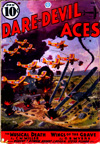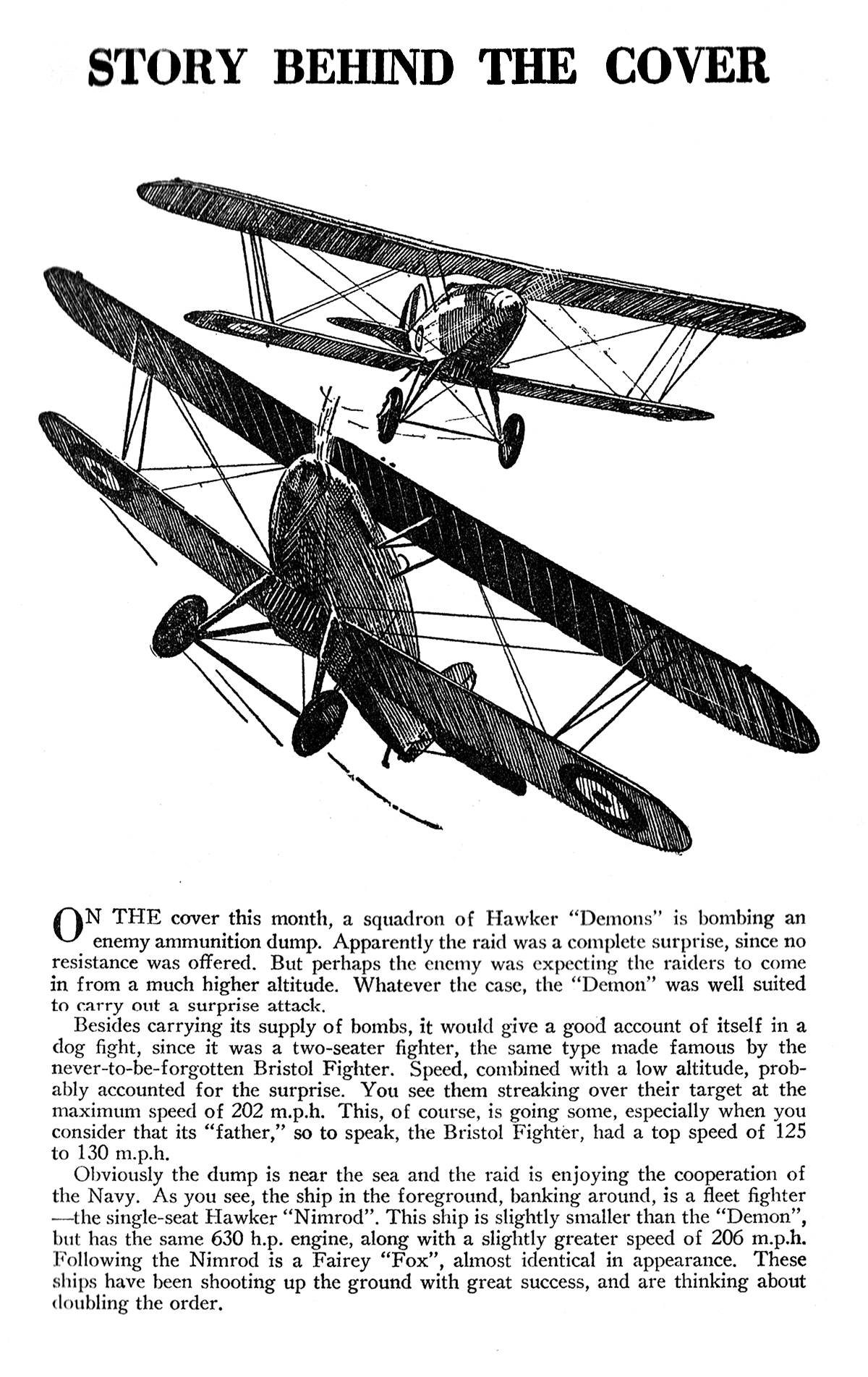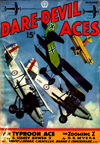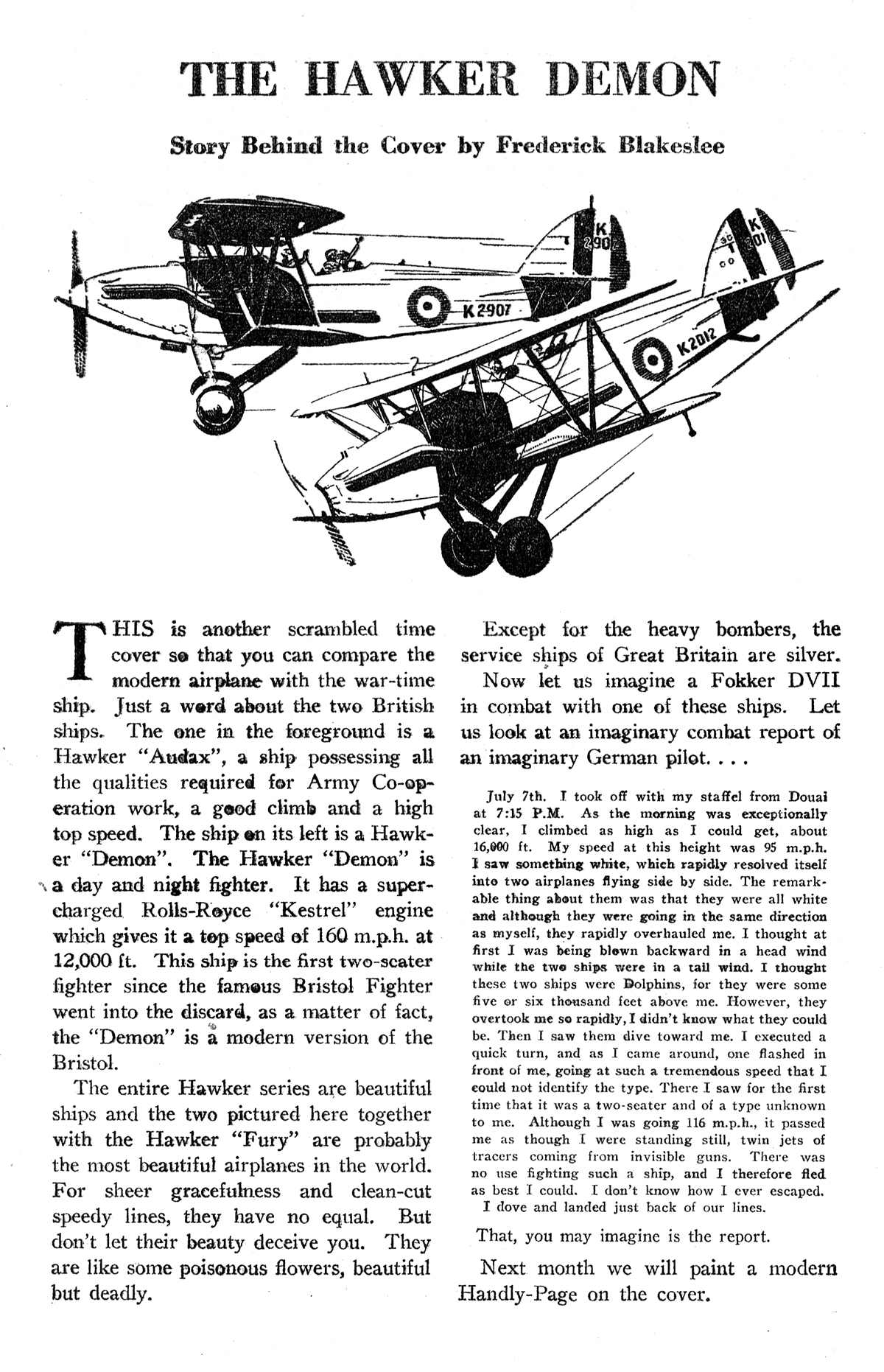“The Hawker Fury” by Frederick Blakeslee
Frederick Blakeslee painted all the covers for the entire run of Dare-Devil Aces. And each of those covers had a story behind it. On Dare-Devil Aces’ September 1936 cover, Mr. Blakeslee presents a couple Hawker Furys escorting a flight of Hawker Demons on a bombing mission!
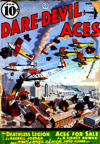 THIS black and white drawing which you see above, is the English ship, the Hawker “Fury.” It appears on the cover as an escort to the Hawker “Demons,” towards which we have given much space in the past. The “Demons” of course, are doing the actual bombing. The “Fury” happens to be a single-seater fighter with a maximum speed of 240 m.p.h. at 14,000 feet. It is naturally a very handy crate with which to protect the bombing ships.
THIS black and white drawing which you see above, is the English ship, the Hawker “Fury.” It appears on the cover as an escort to the Hawker “Demons,” towards which we have given much space in the past. The “Demons” of course, are doing the actual bombing. The “Fury” happens to be a single-seater fighter with a maximum speed of 240 m.p.h. at 14,000 feet. It is naturally a very handy crate with which to protect the bombing ships.
Now, I believe, is as good a time as any in which to answer the frequent question, “Why don’t you paint more American ships?” The answer, I believe, should be obvious.
America, of all the nations of the world, should be about the last to be drawn in a major war. We are less secretive about our military plans and aviation developments than other nations, and any information regarding our ships is readily available to the readers.
However, across the seas, such, unhappily, is not the case. War clouds hover constantly above the threatened capitals of Europe. And while no nation there will admit to thoughts of aggression, we are well aware that it might come any minute. I have a natural interest in the ships of the English, feeling that they are naturally our friends and allies. We know too, that they are as peace loving as we, but by the very nature of their geographical situation, are more apt to become involved in war than ourselves. Feeling that your interest naturally runs that way, I have tried to give you as much information on British ships as I possibly can.
You will also note that I have from time to time, painted the German ships of war. We all know of Germany’s gigantic military preparations; we know very well that she may become the bombshell that will once again rock the earth. What then is her equipment in the sky? Next month I shall try to elaborate on the German air strength, giving you all the information I can possibly gather. It must be kept in mind however, that Mr. Hitler and his aides keep their activities pretty much under cover. Once in a while, though, I manage to get a peek. And when I do, you can be sure that I’ll pass the news along.
Fred Blakeslee
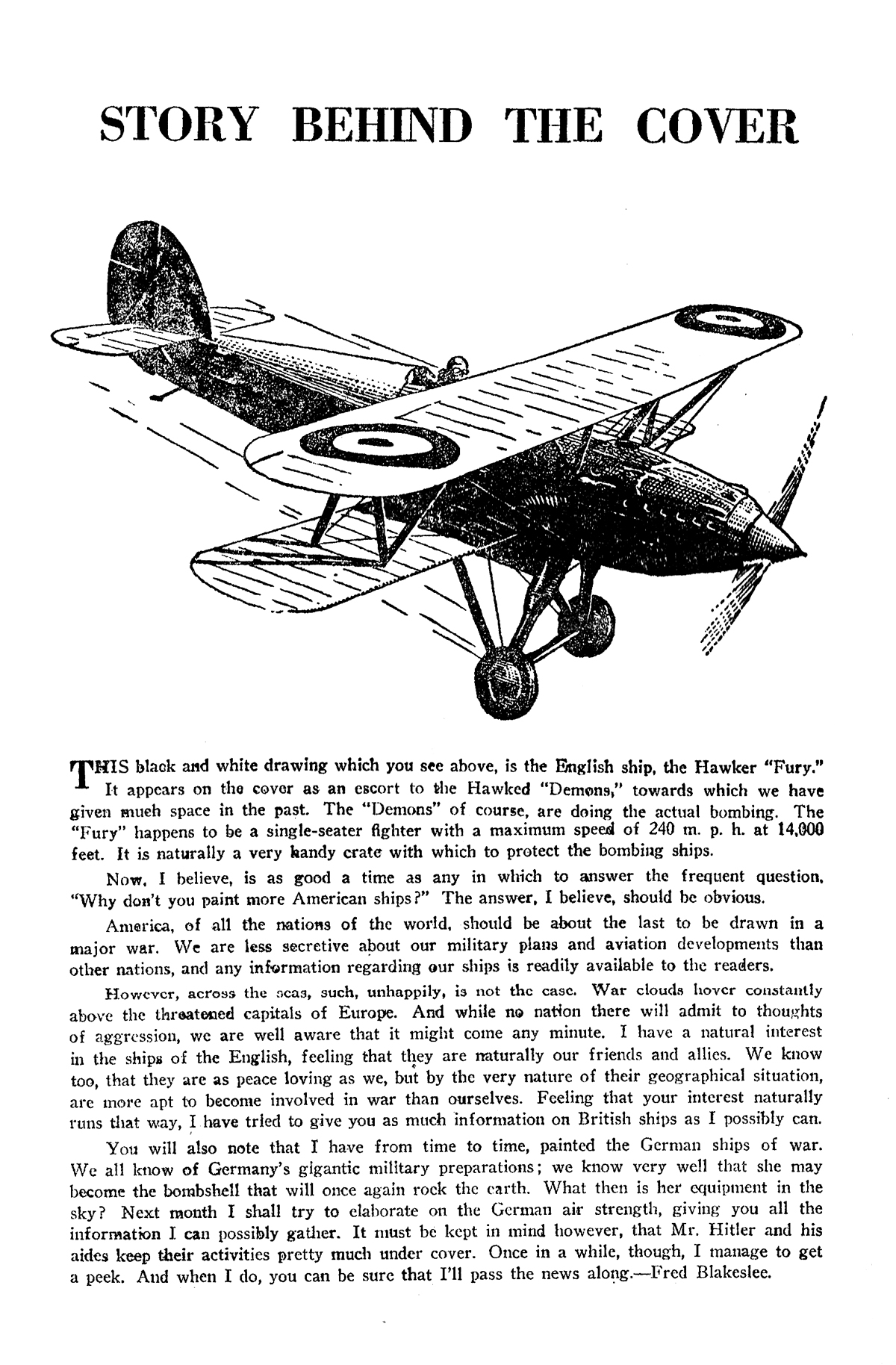
“The Hawker Fury: The Story Behind The Cover” by Frederick Blakeslee
(October 1936, Dare-Devil Aces)





